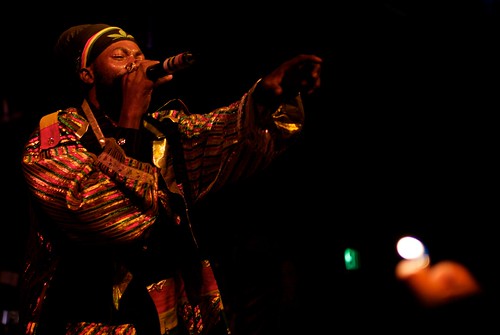
I realized today that all this time I have failed to provide any good recipes to go with my advice!
Here's a delicious and simple recipe for a Roasted Vegetable Stew that I've adapted from a recipe I found in a book on soups:
4 Parsnips, cut lengthwise into 4 pieces and then quartered
2 Red Onions, cut into thin wedges
3 Garnet Yams, cut into chunks
1 Large Leek, cut thickly
1 Fennel Bulb, cut into chunks
3 Celery Stalks, cut into diagonal slices
1 Butternut Squash, skinned, seeds removed, and cubed
2 Whole Heads of Garlic
4 Tablespoons Olive Oil
Herbs du Provence (or just Thyme), Salt, and Pepper for seasoning
4 Cups Vegetable Broth
Handful of Cherry Tomatoes
Pre-heat oven to 400 F. Put all of the cut veggies into a large roasting pan (I need to use two separate 9" x 13" pans for this recipe, but that's only because I don't have a bigger pan!). Drizzle 3 tablespoons of the Olive Oil over the veggies and toss to cover evenly. Put the last tablespoon of olive oil in a little bowl or mug and dip each whole head of garlic into it, being sure to entirely coat it. Place the two oiled heads of garlic on top of the pan of veggies, and moderately sprinkle Herbs du Provence over everything. Place the pan in the oven for at least 45 mins, or until the veggies are roasty browned and tender.
While you're waiting for the veggies to cook, you can make some delicious bread to go with your stew!
1 Loaf crusty bread, I would recommend Ciabatta or Thick Baguette
3 Tablespoons butter or butter substitute (I use Earth Balance)
2 Cloves Raw Garlic, chopped
4 Pieces Sun-dried Tomato
Paprika, Parsley, or in my case Mexican Spiced Chili Seasoning for taste and color
Take your loaf of crusty bread and cut diagonal slits into the bread without cutting all the way through. Mix 3 Tablespoons of butter stuff with the chopped garlic and sun-dried tomatoes. Use a butter knife to stuff and spread the mixture into the slices of the bread. When you're done, sprinkle some seasoning across the top of the loaf and put the bread back together, wrapping the whole thing in foil. When you're ready to bake, put the foiled loaf in the oven at 400F for 10 mins covered so that it can get flavorfully buttery infused, and then uncovered for 5 minutes so that it can get golden brown. I would recommend waiting until the stew is done to toast the bread so that you can serve it up immediately all warm and delicious and whatnot.
Once the veggies are done and you've removed them from the oven, take one head of garlic and squeeze the roasted cloves out. Save the other head for serving with your meal. Take half of the roasted veggies with the squeezed garlic and mash it all up with the 4 cups of vegetable broth with either a food processor or blender until it is almost smooth. Mix the rest of the roasted veggies into this stew and heat on the stove until boiling. Add salt and pepper to taste. When ready to serve, place a few cherry tomatoes on top and garnish with some herby green things (like thyme or rosemary sprigs) for looks and aroma.
It's plenty meal for 4-6 people when served with toasty bread and roasted garlic. What's more, when made with Earth Balance this recipe is vegan!
Tonight we complemented our meal with peach champagne avec fresh strawberries for a fun and tasty beverage. Bon apetit!






